Hello World,
Back in 1995, the Las Cruces District Office botanist, Laird McIntosh, was out botanizing on the east side of the Organ Mountains, in Rock Springs Canyon. He collected a few plants, one of which was an inconspicuous little member of the carrot family (Apiaceae) that he identified as Spermolepis echinata. At that time, Spermolepis echinata was the only Spermolepis known to occur in New Mexico. Here’s his specimen:

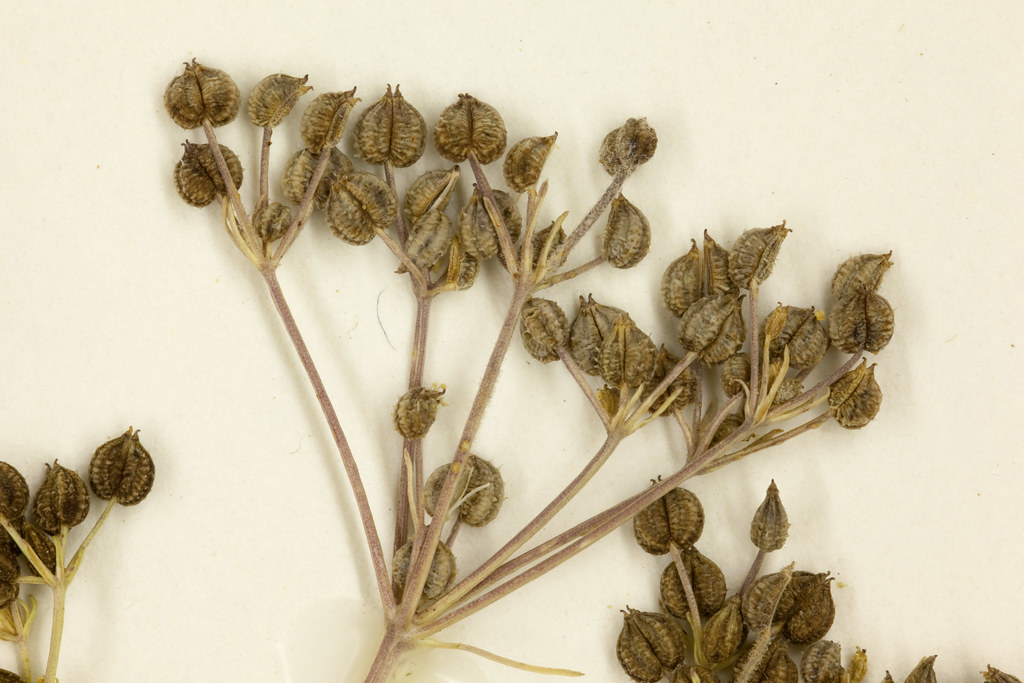
That specimen sat in the New Mexico State University Herbarium (NMC) for 15 years or so. Then Guy Nesom, of the Botanical Research Institute of Texas, decided to study Spermolepis. He got specimens on loan from most of the major herbaria in the southwestern U.S., including NMC. He published the results of his research in 2012, and you can read it here. Nesom made a few changes in the taxonomy of Spermolepis, two of which are relevant here. First, he concluded that Laird McIntosh’s specimen was a new species, which he named Spermolepis organensis. That lone plant on the sheet was the only known individual of this species when Nesom published his work. Second, he separated Spermolepis echinata into two species: Spermolepis echinata and Spermolepis lateriflora. All the New Mexico specimens–except Laird’s from Rock Springs Canyon, of course–were assigned to Spermolepis lateriflora. Spermolepis echinata, which we had thought to be the only Spermolepis in New Mexico, was now not known to occur in the state at all.
Here’s what Spermolepis lateriflora looks like:
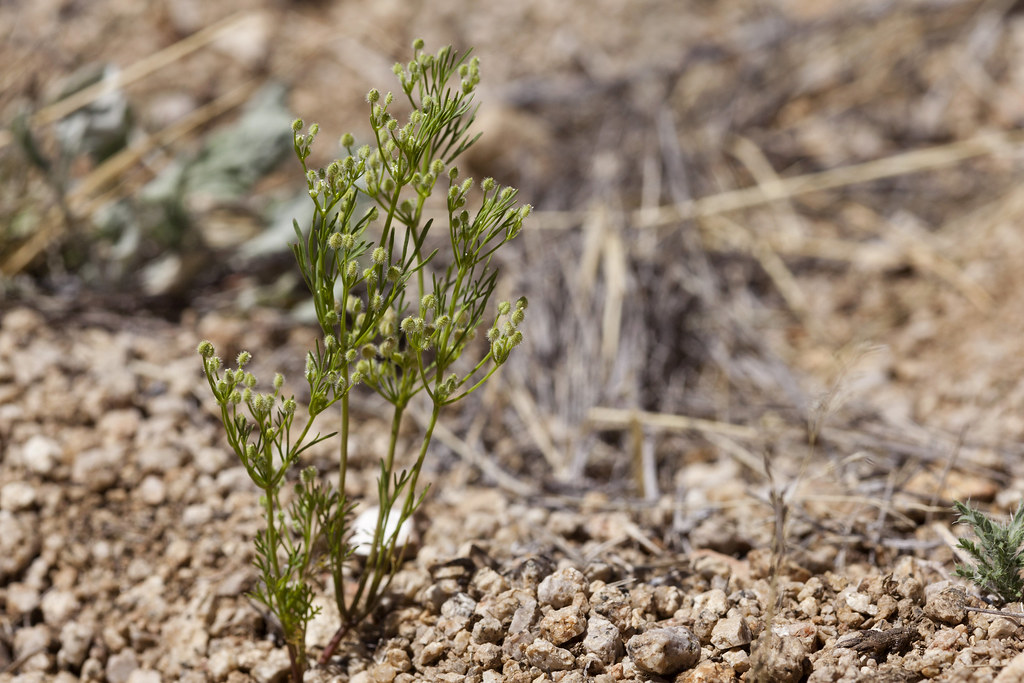
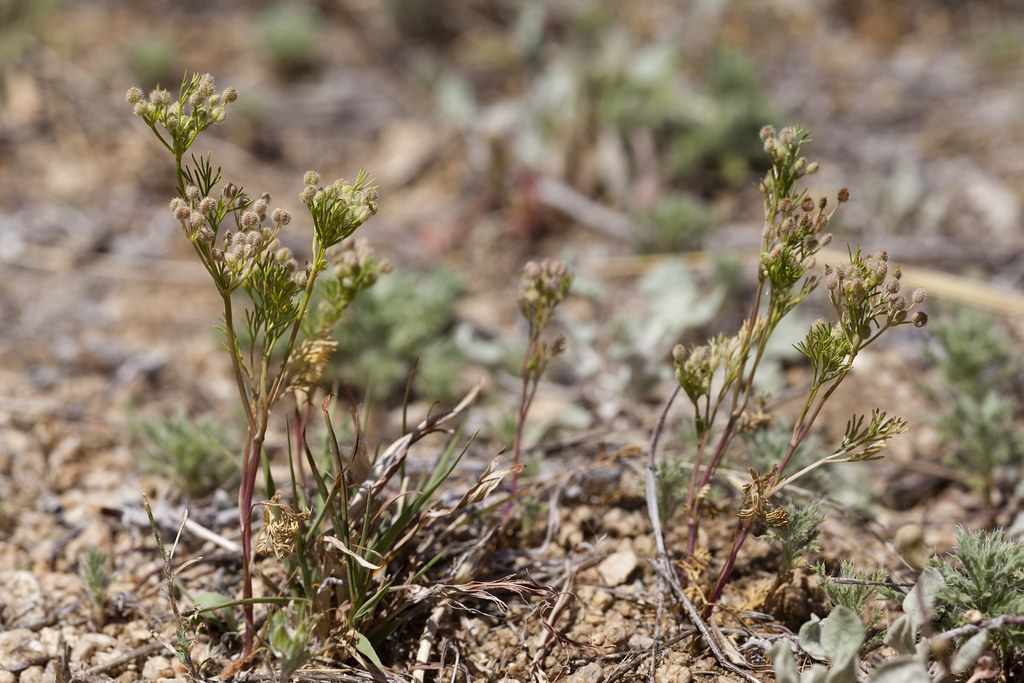

There are a couple of clear differences between Spermolepis lateriflora and Spermolepis organensis. The fruits of Spermolepis lateriflora have hooked hairs, while those of Spermolepis organensis are glabrous. Spermolepis lateriflora has sessile umbels, while Spermolepis organensis has pedunculate umbels. So, morphologically it’s clear enough. However, naming a new species based on a single specimen is a bit risky. Maybe this was just one odd individual rather than a species.
Following the publication of Nesom’s paper, a few New Mexico botanists went out to look for Spermolepis organensis at Rock Springs Canyon where Laird McIntosh collected it. Ken Heil and Dave Anderson went out there in 2013. I joined them for another search in 2014. Jeanne Tenorio and I looked for it again in 2015. None of us found it. We found a few Spermolepis, but nothing with the glabrous fruits of Spermolepis organensis. Repeating the search was on my to-do list this year, but I was beginning to suspect Laird’s plant was just a one-off with anomalous morphology.
Before I got the chance to go out and look for Spermolepis organensis, I was out on the northeast side of the Organ Mountains, a couple of miles north of Rock Springs Canyon, to collect seeds. A friend of mine, Gregory Penn, joined me. We made a Seeds of Success collection of Phacelia coerulea. I’m allergic to this species, and it causes rashes very much like poison ivy. Most people have no reaction to Phacelia coerulea and other members of the genus, but a lucky few of us do. In hindsight, doing a seed collection of it was a bad idea. Of course, it’s not just hindsight. I knew it was a bad idea at the time and did it regardless. In any case, before we started collecting seeds, only a few steps out of the truck I noticed that Spermolepis was abundant. Some of it was Spermolepis lateriflora, but I knew immediately that some of it was not. There were many plants that had no hooked hairs on their fruits. I wasn’t sure these were Spermolepis organensis, though. Perhaps I was mistaking another genus for Spermolepis. For instance, perhaps they were Cyclospermum leptophyllum, another inconspicuous little carrot. So I took some photographs and collected some specimens. Both Spermolepis lateriflora and this other little carrot were abundant throughout the area where we collected Phacelia coerulea.
After reviewing Nesom’s work and looking at my specimens under a dissecting microscope, I became certain the plants without hooked hairs on their fruits were indeed Spermolepis organensis. So, Laird’s plant was not an oddball. Spermolepis organensis is out there, easily identifiable from morphology, and locally abundant. Our earlier fruitless searches, I guess, resulted from looking for them when moisture conditions weren’t quite right. Or perhaps it only occurs sporadically at Rock Springs Canyon, and is more reliably found a bit to the north. In any case, here’s what it looks like:
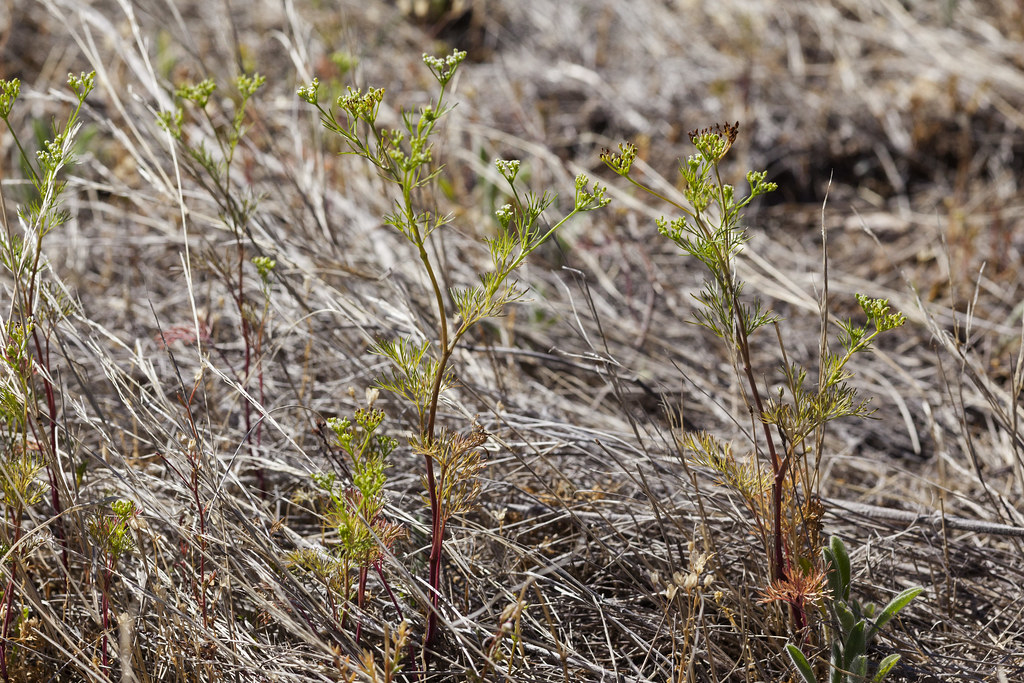
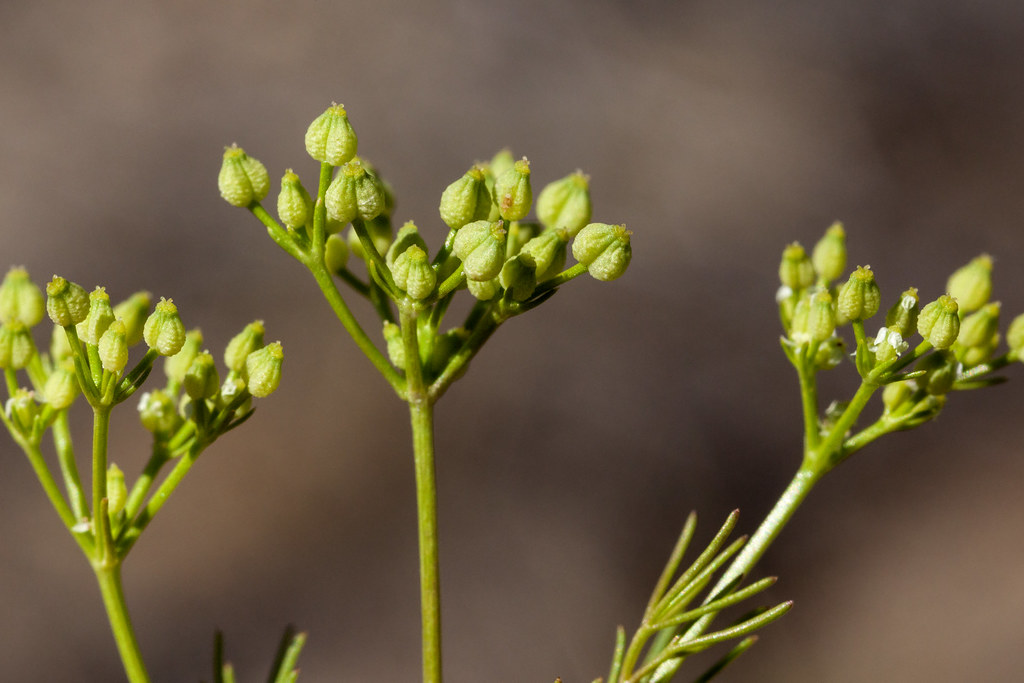
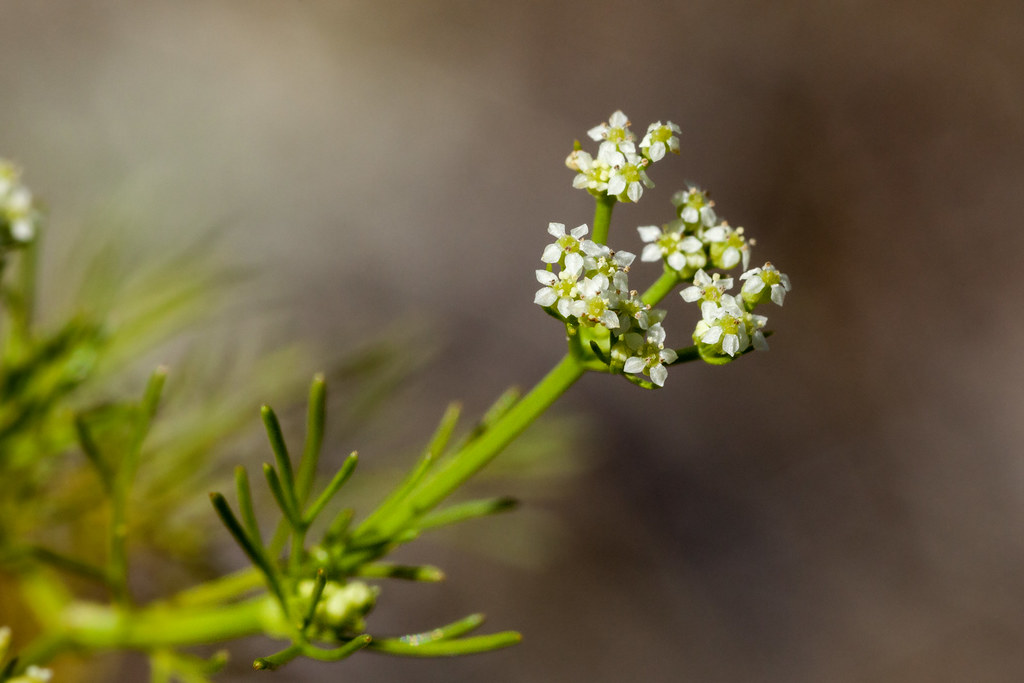
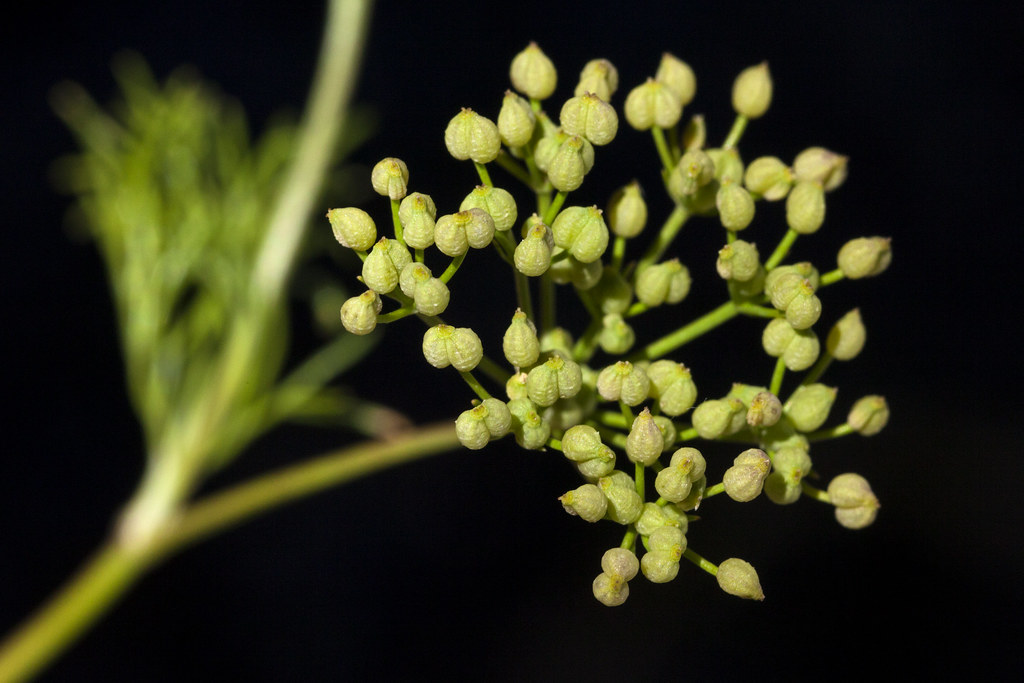
Once I knew we had found Spermolepis organensis, I decided I needed to go back out there, look at more of them, collect a few more specimens so I could send duplicates to various regional herbaria, and visit a few more sites to get a better idea of its distribution in the area. I was also hoping to get some more pictures, of both Spermolepis organensis and Spermolepis lateriflora, but it was very windy. I went back another week later for pictures and it was, again, very windy. Oh well. I eventually got some decent pictures in spite the wind. During these revisits of the area, I noticed that there seem to be three Spermolepis species out there. One, with sessile umbels and hooked hairs on the fruits, is Spermolepis lateriflora. One, with pedunculate umbels and glabrous fruits, is Spermolepis organensis. The third has pedunculate umbels and hooked hairs on the fruits. I collected specimens of all three and, again, I needed to review Nesom’s work and look at my specimens under a dissecting microscope. It turns out that the third Spermolepis is Spermolepis echinata. Here’s what it looks like:
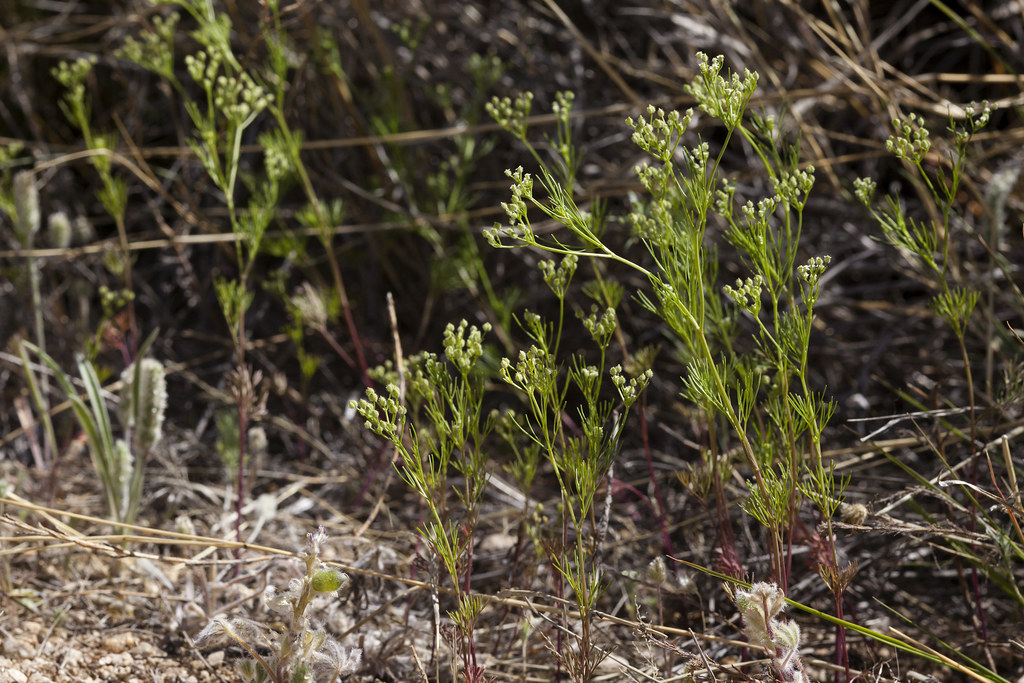
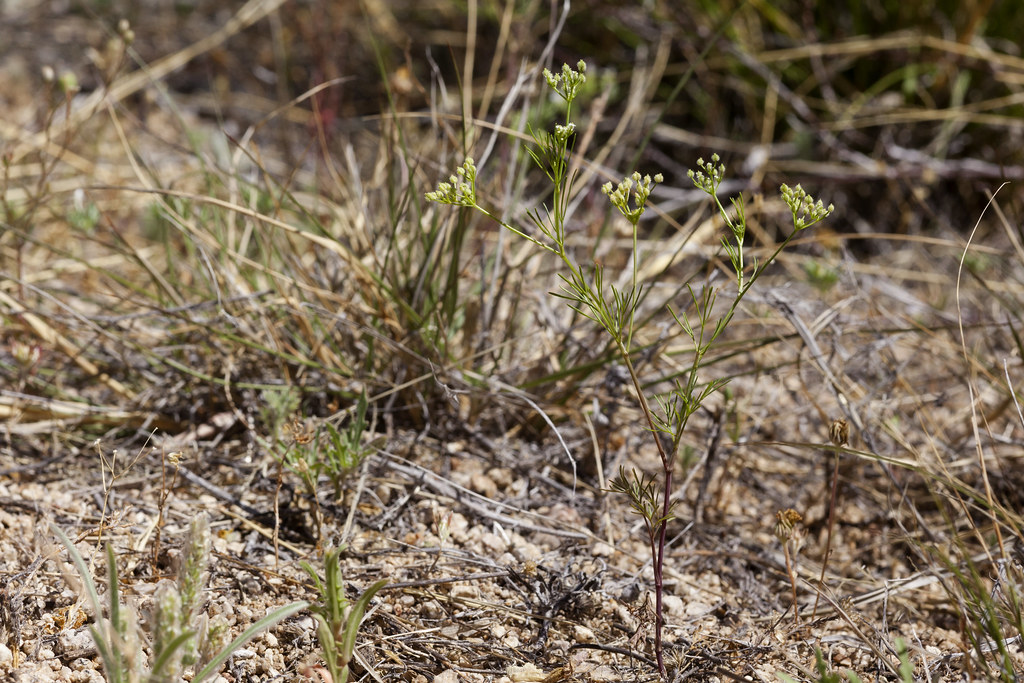
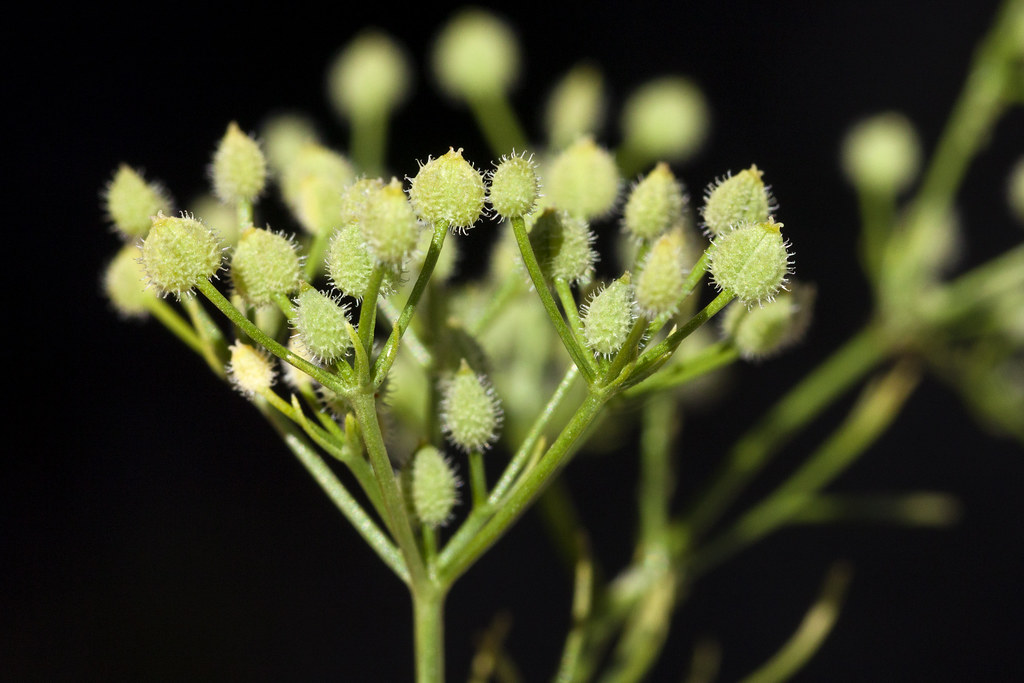
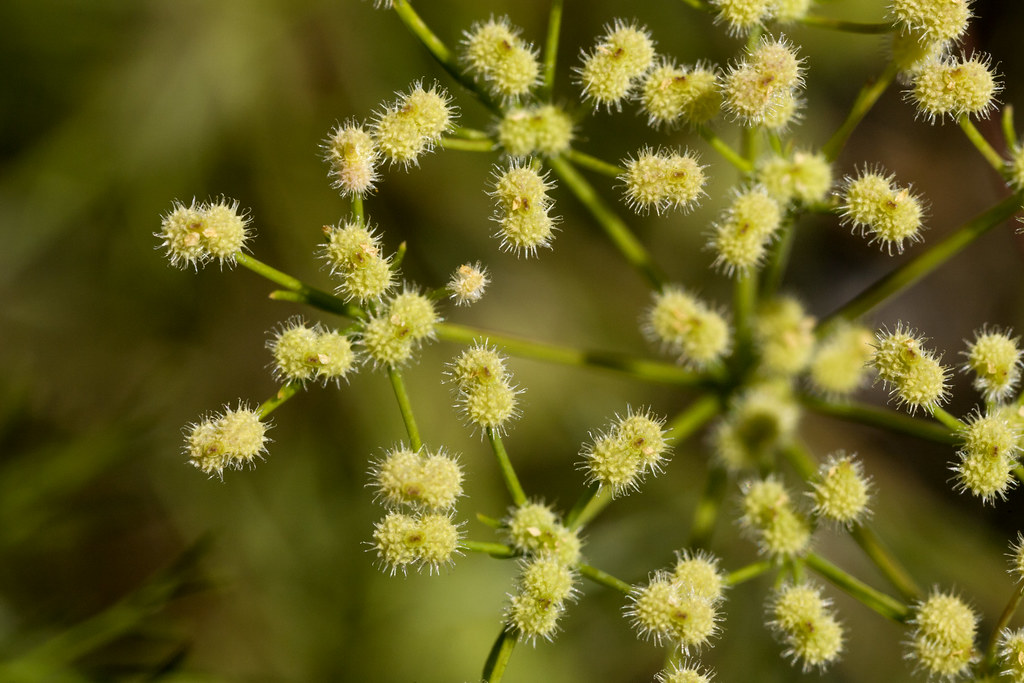

I guess this is the story of how a plant that was identified as Spermolepis echinata, but wasn’t, led in a roundabout way to the discovery of Spermolepis echinata in New Mexico. Our knowledge moves forward, more or less, but takes a few odd turns and relies on some happy accidents along the way.
















































